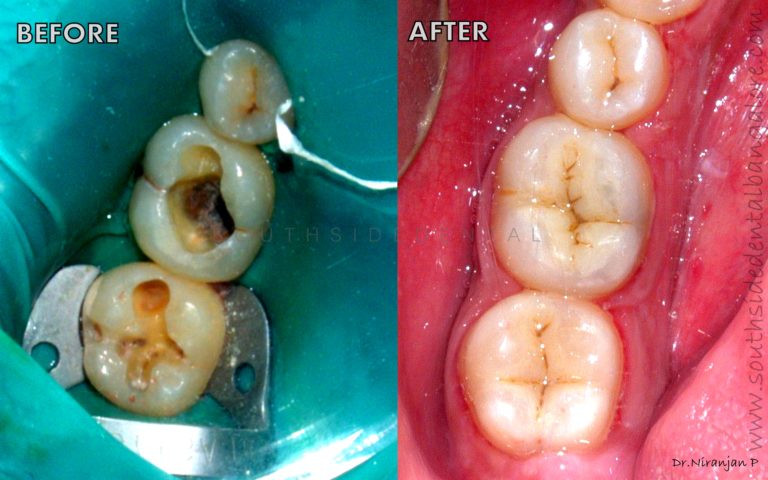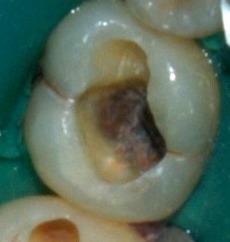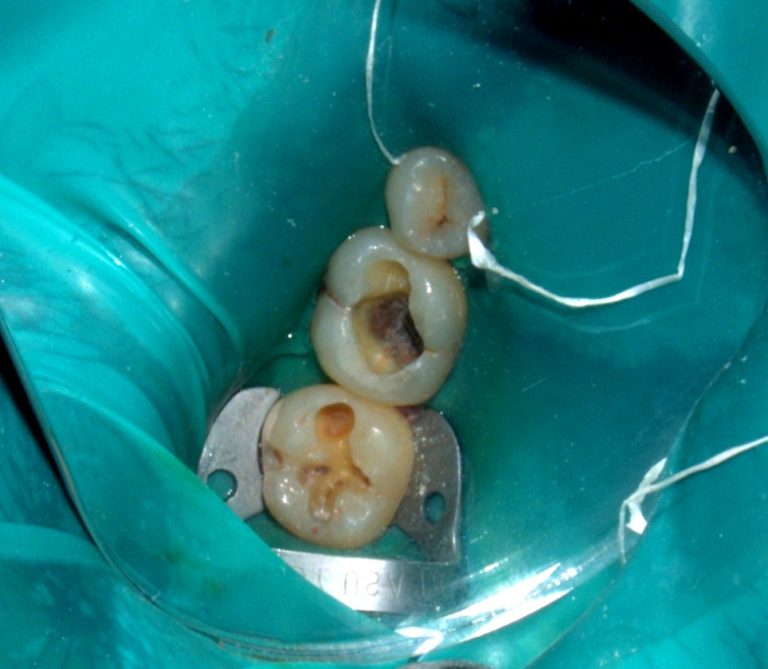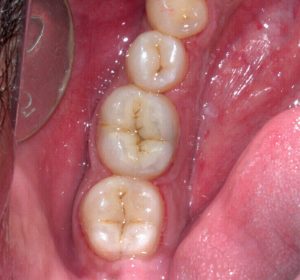
Dental restorations or dental fillings have undergone a sea of change since the time they were introduced into dentistry. Typically a dental filling material is used to replace tooth structure lost to decay. Let us give you a glimpse of the whole process. Tooth decay or cavities can be spotted during a routine dental examination.

Mostly the biting surfaces of the teeth which contain natural grooves and fissures are the first to be affected. And the region between two teeth or the interdental area where food lodgement occurs can develop decay that can go unnoticed for many years.
The process of decay formation is complex. The acid produced by the interaction between bacteria in plaque and sugary substances ( read sticky chocolates) or food debris stuck on teeth (in areas that cannot be accessed by brushing) leads to decay of the tooth- CAVITIES.
If it is left unattended to at this stage then it can lead to progression of the decay process leading to further breakdown of the tooth structure. At this stage patients usually experience mild sensitivity to hot and cold food. Sometimes pain is felt in the affected tooth. Even at this stage if a filling or a restoration is done by complete removal of the decay and or decayed part of the tooth then the tooth can retain its strength and perform well during function ( chewing..etc). And finally, the decay reaches the pulp if left untreated, leading to severe pain.

At this stage, the tooth will require a root canal treatment. ( To read more about Root canal treatment. Click Here).
The procedure of filling or a restoration is a follows.
The tooth to be filled is anaesthetised and all decay is removed from the tooth using high and low speed instruments. Once all decay is removed then a rubber dam is placed (green colour sheet as shown in the pic). A rubber dam is a nothing but a sheet made of rubber that isolates the tooth or teeth from the oral cavity. This way any possible contamination with saliva or moisture is avoided. This is a prerequisite for all tooth colour restorations and any adhesive dentistry protocol.

The cavity that has been prepared by removing the decay and is etched with a special dental etchant (phosphoric acid) and then a bonding agent is applied. This material helps is bonding the composite filling material and the tooth structure. The Composite filling material is then added in layers to recreate the tooth anatomy lost due to decay.
The next step is to finish the filling. This removes all rough or uneven areas and brings about a smooth outer surface layer. The filling is checked for any occlusal interference during biting etc and any high points are corrected.
The tooth is finally polished.

Post Operative care: As the tooth has been restored to it original anatomy, it can perform well during the function, like eating chewing etc. We advise our patients not to bite on very hard food during the first few days. It is also advisable to chew on both sides of the jaw equally. Regular brushing is an absolute requirement to ensure the longevity of the filling. During the routine check-up with us (once every 6 months is recommended), we assess the filling for any chip off or fracture etc and correct them at the same appointment if needed.

Routine assessment also helps us identify new decay in other teeth or other surfaces of the teeth that have been filled. Cleaning between the teeth is essential to prevent decay between teeth. Using a floss or interdental brushes that clean the areas between the teeth should be present in your oral hygiene kit.
Not only are composite or tooth colour fillings strong and long-lasting, they are also aesthetic in every sense of it.
Dr.Niranjan Prabhakar MDS